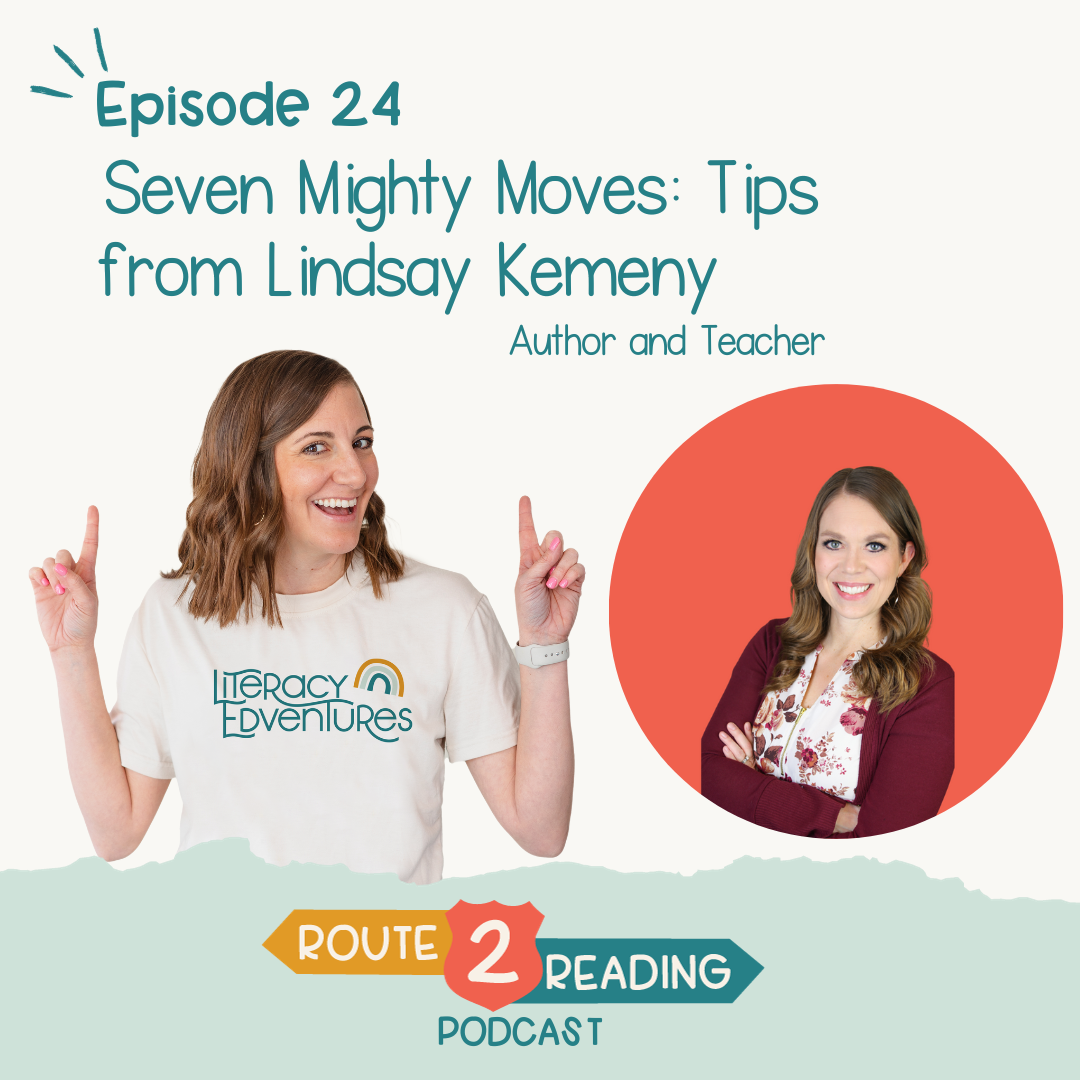Seven Mighty Moves with Lindsay Kemeny
Meet Lindsay Kemeny:
Currently teaching first grade
Once a kinder teacher who taught balanced literacy, she went on a quest to find out what it really meant to teach reading when her son was diagnosed with dyslexia and depression.
Author of Seven Mighty Moves
Check her out!
Website: Lindsay Kemeny
Podcast: Literacy Talks
Instagram: lindsaykemeny
Facebook: Teaching with Lindsay Kemeny
Book: Seven Mighty Moves
What is The Seven Mighty Moves book?
Seven Mighty Moves is a guide for K-3 teachers that talks about how they can improve their reading instruction in the classroom.
This book covers foundational aspects of reading (phonemic awareness, comprehension, etc.), strategies teachers can implement right now in their classroom, and includes literacy routines and lessons that Kemeny herself uses with her own students.
This straight-forward, no-nonsense guide is a must have for all teachers who teach literacy!
Inspiration behind The Seven Mighty Moves
After being a tad bit annoyed that she was taught to teach reading the wrong way, she set out on her own journey to find the best way to teach kids how to read.
She believed that every teacher deserved to know the information and every student deserved a teacher like that, too.
She began blogging and tweeting ideas about SOR and people started paying attention. So much attention, in fact, that…
Scholastic reached out! She said she would be delighted to write an SOR book for them and a few months later, it got approved to be written.
The following year was spent researching, editing, revising, and reaching out to experts in the SOR field. After all this, The Seven Mighty Moves was born.
What are the Seven Mighty Moves?
These are seven major changes Kemeny mentions in her book that teachers just like you can implement right away.
Teach phonemic awareness with intention. Be intentional and explicit in how you teach it. We don’t need to be spending 20 minutes on phonemic awareness - we must get to the phoneme level as quickly as possible.
Teach phonics explicitly and systematically. Follow a scope and sequence. Kemeny loves Anita Archer’s I Do, We Do, You Do models.
Abandon the 3 cueing strategies. Bye-bye! We don’t want the pictures on the page to give us a cue to what the word is. Rather, we want to replace those cues with decoding strategies for our students.
Use decodable texts for beginning readers. Our youngest readers should not be using predictable, repetitive texts. But we don’t need to overcorrect here either. Decodables are great for early readers and should be used. But we should also move on from them as soon as the child is ready.
High frequency words can be sounded out - A vast portion of high frequency words can actually be decoded. Students can in fact match the sound to the spelling because most high frequency words can be sounded out - only parts of the words must be memorized.
Have Intentional fluency practice. Give students lots of practice and opportunities to read aloud and to read fluently.
Improve comprehension through background knowledge and vocabulary. There are other ways to expand on comprehension, of course, but focusing on background knowledge and vocabulary within a text is vital for comprehension.
What does a day in the life of Kemeny’s literacy block look like?
Get ready for some bell-to-bell instruction!
Classroom starts the day with a message on the board and a song
Quick phonemic awareness warm-up
Move to desks and practice the phonics lesson which includes:
Dictation, reading words, reading a passage, looking in the decodable passage for the skill that’s being taught, etc.
Read aloud/shared/close reading time! Kemeny introduces vocabulary and background knowledge for the book they’re reading. Read the book and discuss the setting, characters, plot, etc.
Students practice their writing by responding to some aspect about the story.
Time for some Syntax Project work, where students are prepped for writing by talking about sentences and what whole sentences sound.
Move on to literacy centers and small group instruction
Then, if time allows, a little more writing until lunch time!
We hope that this Q&A with Lindsay Kemeny inspires you to check out her book and put those Seven Mighty Moves into your classroom right away!


